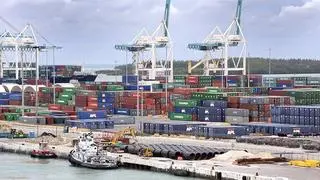The savings rate had declined to 30 per cent at the end of March 2017, a study by India Ratings released on Monday said. It was 34.6 per cent on March 31, 2012.
Saving is a key to investment. It has three sources, households, private corporations and the public sector. According to India Ratings, during 2011-12 to 2016-17 (FY12-FY17), the share of the household sector in total saving was 60.93 per cent, while private corporations accounted for 35 per cent, and the remaining 4.07 per cent was from the public sector.
Household savings intermediated by banks and other non-banking financial entities are a major source of investment funding for the Indian economy.
According to the report, “the growth of household savings at 3.7 per cent was the lowest among the three broad categories during this period. Savings of private corporations grew 17.4 per cent, and that of the public sector 12.9 per cent during FY12-FY17.” As a result, the household savings rate (gross household savings/ gross domestic product (GDP) plunged to 16.3 per cent during the period under discussion. Since this sector is the largest contributor to savings in the economy, the overall savings rate declined. The report believes that if the declining trend of household savings continues, “it may pose a serious challenge to GDP growth and macroeconomic stability.”
The report said though the twin policy shock of demonetisation and Goods and Services Tax (GST) had economy-wide ramifications, it was more pronounced in the case of the household sector. “The savings rate of the household sector plummeted 153 bps (1.53 per cent) y-o-y (year-on-year) in FY17, while that for private corporations fell 12bps (0.12 per cent) y-o-y. The savings rate for the public sector increased 37bps (0.37 per cent). However, the overall impact was a decline of 128 bps (1.28 per cent) in the savings rate.”
Devendra Kumar Pant, Chief Economist and Senior Director (Public Finance), India Ratings & Research, said not only has the household savings rate declined, the household sector is now getting more leveraged. “While MSME loans contracted in FY16 (2015-16) and FY17 (2016-17) and were static in FY18 (2017-18), personal loans are growing rapidly. Unless household savings recover, rising personal loans may pose a challenge,” he said.
There is one more problem. On the one hand, the growth rate of household savings has come down, and on the other hand, whatever is saved is going to yield lower returns. The reason, according to Pant, is that nearly three-fourths of household savings is invested in dwellings, other buildings and structures. Since real estate is passing through a bad phase, the return on investment will either be negligible or even negative.
According to the report, although MSME (Micro, Small and Medium Enterprises) are finding it difficult to access credit, credit to resident households has been rising at a much faster pace lately than the overall non-food credit. Though the share of resident households (personal loan) in non-food credit declined to 18.2 per cent in 2011-12, it has been growing since then and reached 25.9 per cent during the April-June quarter of the current fiscal. Resident households have emerged as a preferred choice for banks, following the deterioration in the asset quality of banks, owing to significant lending to corporates turning non-performing assets.
The rising leverage of resident households is still not alarming; however, India Ratings believes that “if this trend continues, particularly against the backdrop of the falling savings rate of the household sector, it has the potential to turn into a major challenge and growth disruptor in the medium-to-long term.”







Comments
Comments have to be in English, and in full sentences. They cannot be abusive or personal. Please abide by our community guidelines for posting your comments.
We have migrated to a new commenting platform. If you are already a registered user of TheHindu Businessline and logged in, you may continue to engage with our articles. If you do not have an account please register and login to post comments. Users can access their older comments by logging into their accounts on Vuukle.